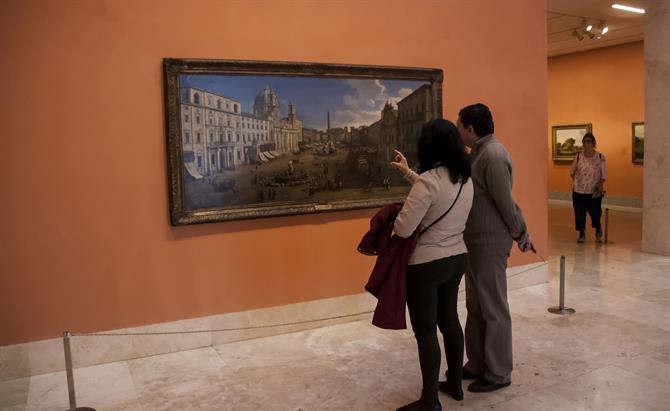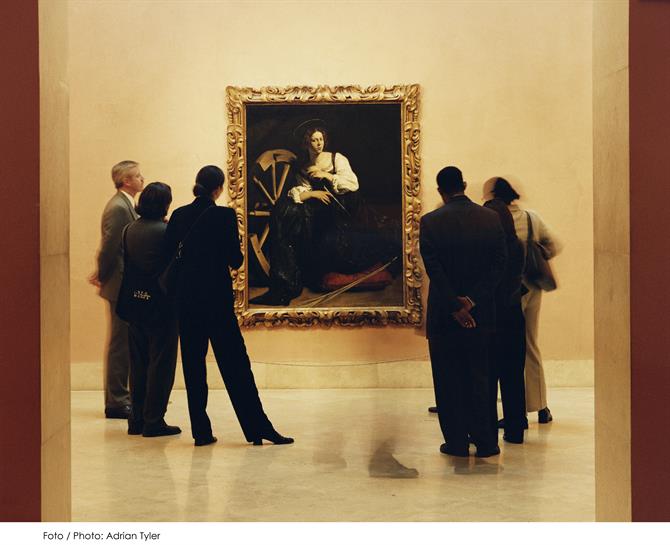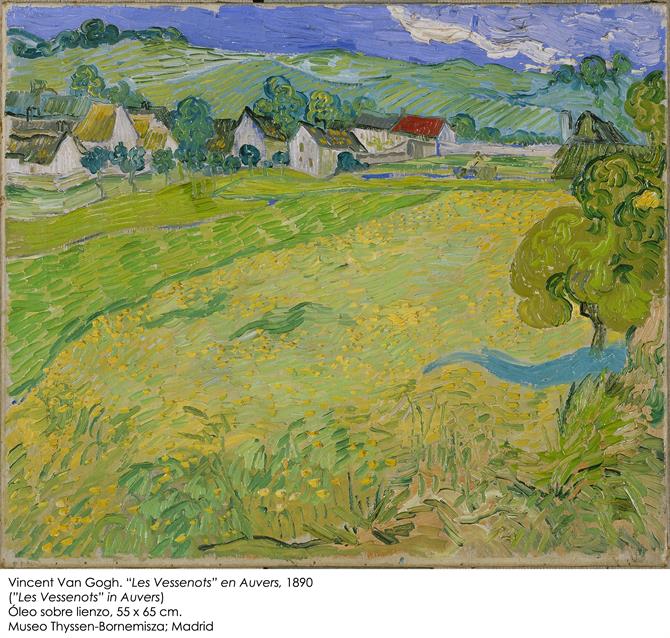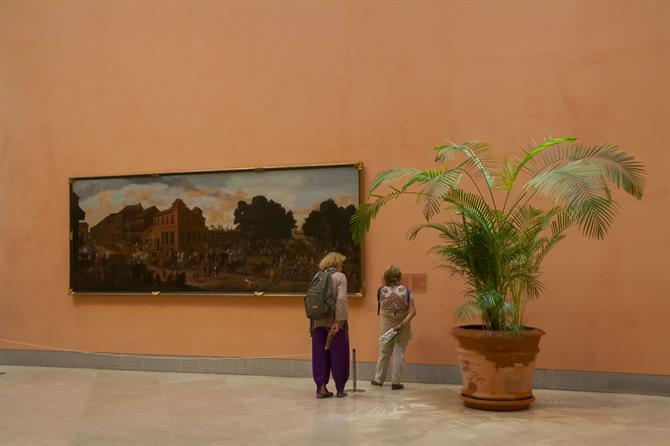The Thyssen-Bornemisza Museum is the 3rd largest museum in Madrid. Together with the Prado and the Reina Sofía - the two other major art museums in the capital - it forms part of "el Triángulo del Arte", or, the Golden Triangle of Art.
The three museums form this triangle in the heart of Madrid and are within walking distance from each other. You can find them on the map at the bottom of the page. The Golden Triangle is perhaps the most important concentration of paintings in Europe!
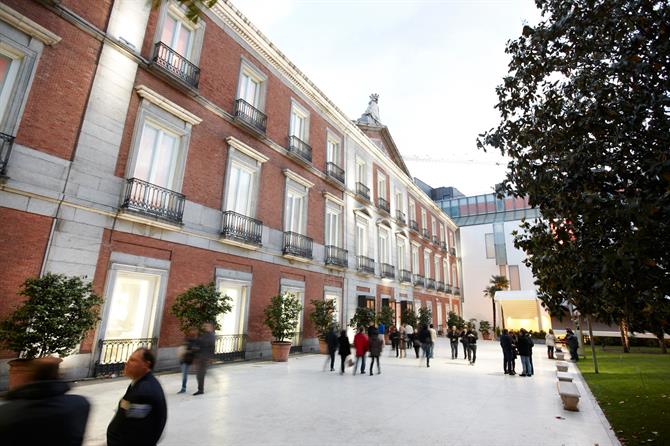
The Thyssen Museum includes a mix of Medieval art, 17th century art by Flemish/Dutch masters, and works by Dalí - an unique addition to the classical art in the Prado museum and the modern art in the Reina Sofia museum.
The building is of neoclassical style and is similar to the Prado Museum on the Paseo del Prado. The elegant Palacio Villahermosa has housed the museum officially since 1992, after which followed an expansion that doubled the space available.
Why is the Thyssen Museum so Special?
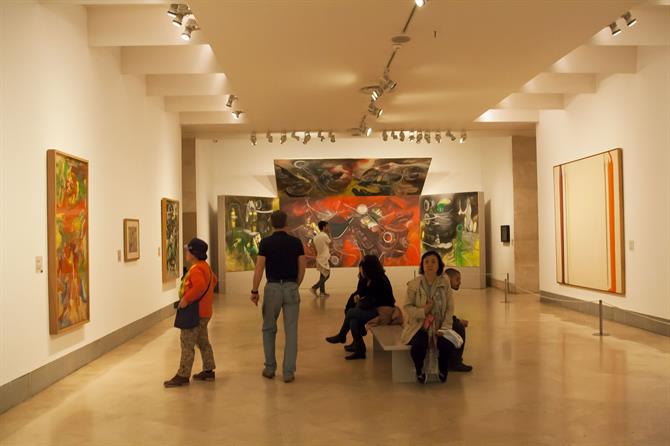
The Thyssen Museum originated from the private collection of the Thyssen family, which was eventually made public in this museum. The private collection of Baron Hans-Heinrich Thyssen-Bornemisza (1921-2002) is generally regarded as the most important art collection in the world.
It shows various art movements, and incorporates the personal taste of the original collectors. It is a unique and fascinating walk through art from the 13th century until well into the 20th century.
With more than 1,000 works, the visitor is immersed in a number of different styles: from Renaissance, Baroque and Rococo romanticism, impressionism and pop art. Familiar names in the permanent collection include Dali, Picasso, Monet, Rubens, Rembrandt, El Greco and van Eyk.
From Private Collection to Museum
The Thyssen private collection is by far the most important of the last century, both in quality and size. How could a private collection take on such huge proportions? Grandfather August Thyssen (1842-1926) was the founder and owner of an iron and steel plant. His fortune allowed son Heinrich Thyssen Bornemisza (1875-1947) to follow his passion in collecting art since 1920. He sought masterpieces from the 13th to the 18th century, with a penchant for Italian, Flemish, and Dutch art.
When Heinrich died in 1947, his collection of almost 525 works was distributed among his heirs. However, his son Baron Hans Heinrich Thyssen-Bornemisza bought back the pieces from the heirs to unite the all, and then expanded the collection further. The collection had just about every trend from contemporary art supplemented from the 60s, especially early German expressionism. Thus, in just two generations, the Thyssen collection grew into the most important of the 20th century.
Baron's home in Switzerland became too small for his growing collection, so he had to look for somewhere else to store the pieces. Partly due to his marriage with the Spanish aristocrat Carmen "Tita" Cervera, he signed an agreement with the Spanish state. The some 200 works found a home in the subsequent extension of the museum.
Organizing a Visit to the Museum
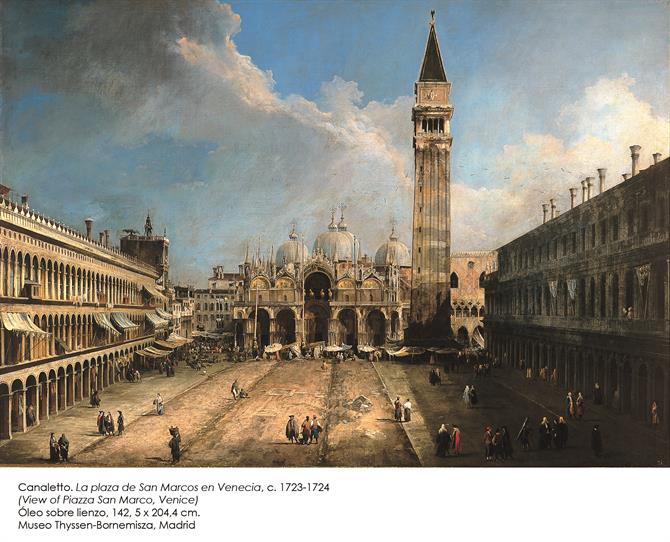
How do you begin a visit? It is a good idea to think about which schools you want to see in advance. The museum recommends starting on the 2nd floor at the 13th-century art and then chronologically following the route down from European paintings in the Middle Ages to paintings of the 20th century.
While this is a informative lesson in Western art history, it is a long one; you can consult a museum map to select the specific rooms featuring styles and works you are most interested in, as you can not possibly see everything in one visit. Be sure to grab a map at the entrance. The map also shows where the museum's highlights are, such as "Venus and Cupid" by Rubens (1606-1611) and "Portrait of Henry VIII of England" by Hans Holbein (1537).
If you do start at the Middle Ages on the 2nd floor, make a stop at the "The Annunciation" diptych by Jan van Eyck (1435-1441) and "Saint Catherine of Caravaggio" (1598, see above photo). The detailed city portraits of Venetian Canaletto are not to be missed! It is worth noting that the men in the Thyssen family clearly had a preference for portraits and landscapes.
The nineteenth-century impressionism on the 1st floor, featuring names such as Monet, Renoir, and Degas is a very rewarding viewing experience, as well as the post-impressionism of Gauguin and Van Gogh.
Once on the ground floor, the visitor is immersed in the avant-garde art movements of the 20th century, from expressionism and surrealism to outright pop art. Even artists like Picasso and Chagall are present. American artists hold a prominent place here, with "Hotel Room" by Edward Hopper (1931) and the intriguing "Woman in Bath" (1963, pictured below) by pop artist Roy Lichtenstein. The featured American modern art from the 19th and 20th century makes Thyssen quite unique in Europe.
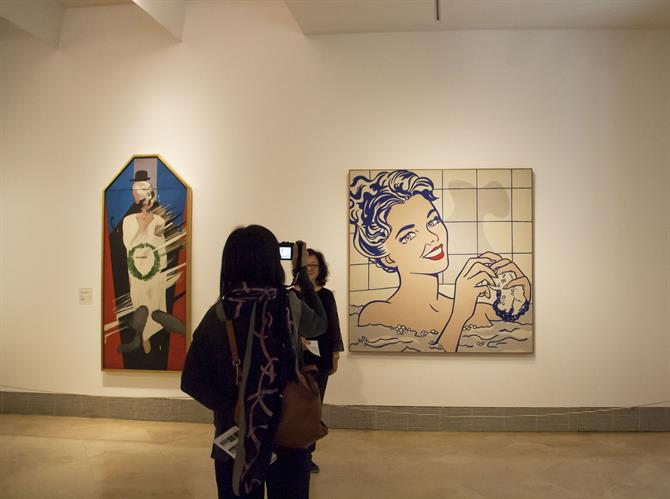
Practical Information
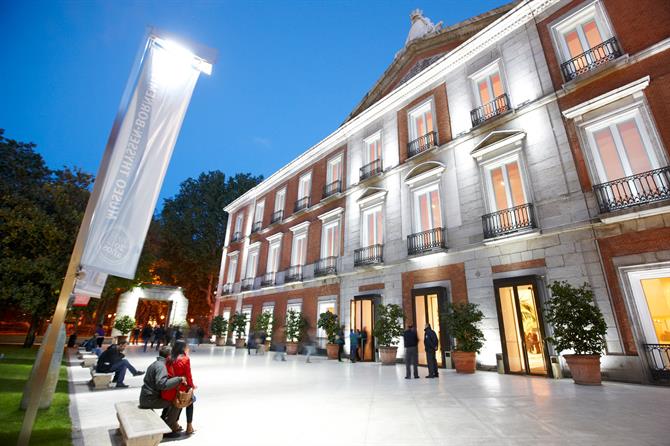
Programs:
The Thyssen museum regularly organizes temporary exhibitions devoted to particular artists, eras, and themes. In addition, the museum invites visitors to play an active role through all kinds of guided tours, thematic itineraries, workshops, courses, lectures, concerts, etc.
Opening hours:
Thyssen is open every day of the week. You may enter up to one hour before closing.
Monday: 12 pm to 4 pm (free visit to the permanent collection)
Tuesday - Sunday: 10 am to 7 pm
Temporary exhibitions on Saturdays open until: 9 pm
Special holidays:
December 24 and 31: Open 10 am to 3 pm
Closed on January 1, May 1, and December 25
Prices:
Monday 12:00 to 16:00: Free.
Access to permanent collection: € 10.
Temporary exhibitions: prices vary.
Price for audioguide: € 4. (€ 3 for temporary exhibitions, € 6 for both)
Access with discount: € 7. This discount is valid for 65+, pensioners, students, holders of the Carné Joven, large families, disabled people (+ 33%), and teachers at the Faculty of Fine Arts.
Free admission: children under 12 years (with guidance) and the unemployed.
Groups of more than 7 persons: € 8 per person.
Also accessible with the Tarjeta Paseo del Arte (Art Walk Map): € 25.60. (The package combines the Prado, Reina Sofia and Thyssen-Bornemisza, both temporary and permanent exhibitions. The Tarjeta is for sale in each of the three museums and can be used within one year from the date of purchase. It's handy if you want to avoid long queues during the free hours.)
Permanent collection is also accessible with the Madrid Card.
Address and contact:
Museo Thyssen-Bornemisza - Palacio de Villahermosa
Paseo del Prado 8
28014 Madrid
Email: cavthyssen@stendhal.com
Tel: 0034-902 760 511
Metro stop: Banco de España (the nearest) or Atocha.
Other Tips for Visiting
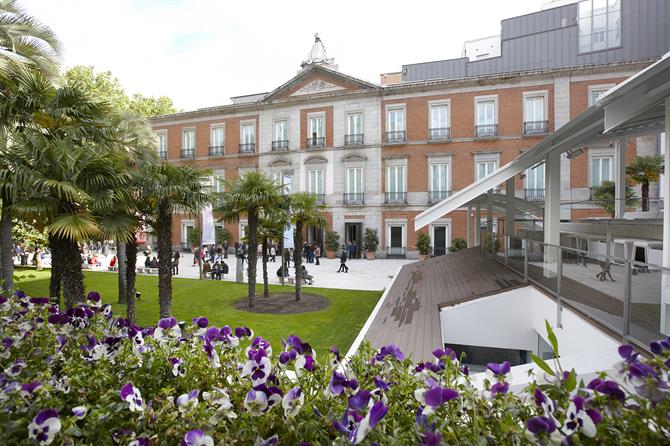
- If you wish to avoid the line-ups, then you can buy tickets online here. For popular temporary exhibitions during the weekend it may happen that you cannot enter immediately, and must wait until a time when there is enough space to let you in. At that time you will get your ticket at the box office.
- If you must wait before your allotted visiting time, you can take advantage of a few nearby attractions to explore. For example, located at the Atocha station, there is a beautiful botanical garden. Take in the small jungle right in the station, and have a drink while you watch the activity of travellers! Likewise, you can eat tapas and enjoy drink in the neighbouring and lively district of Huertas, with all sorts of fun bars (eg. in the Huertas street).
- In July and August, the spectacular rooftop at the Thyssen museum is open. Do not miss the chance to experience stunning views over Madrid if you are visiting during these months. It has a restaurant that serves Mediterranean cuisine. Evenings are recommended!
- Audio guides are available for those who wish to hear the story behind the painting.
Also Good to Know
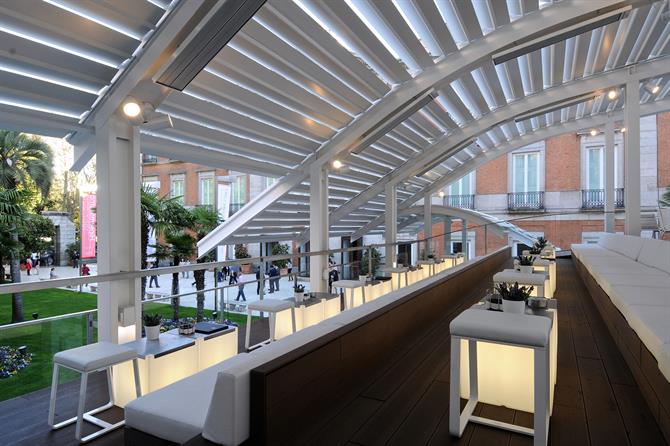
- Taking pictures is allowed in the museum (without flash).
- Bags and coats you may keep in the cloakroom. Some objects, such as umbrellas or large bags, are not allowed in the museum.
- There is wifi in the museum.
- There is a shop where you can buy prints, books, and other souvenirs. This is accessible without a museum ticket.
- Eating or drinking is not allowed in the museum. Next to the building there is a cafeteria-restaurant with a raised terrace overlooking the garden of the museum. (See above photo)
- The museum is accessible to wheelchair users and provides free wheelchairs for use. For children, there are chairs and the like.
We hope you enjoy the museum! Please tell us below what you thought of it. For other museums, check out our list of Top Ten Museums in Spain!


